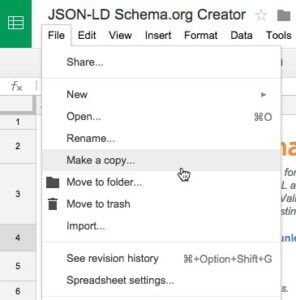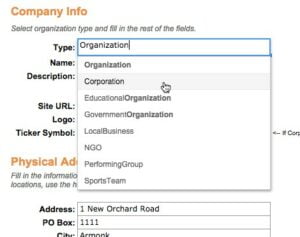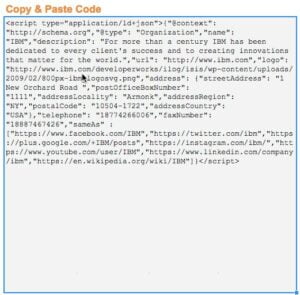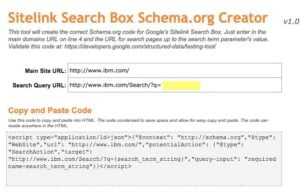Get in touch should you wish to contribute content to RankTank.
Recently, a client of mine rebranded for the second time in 3 years. As their SEO, we focused on redirects and other elements to make sure the value passed from old site to new site. One of the casualties in this rebranding effort was Google’s Knowledge Graph. The graph update fully to the new site and brand, so it reverted the logo to the brand they were two brands ago. Elements like the stock ticker and social media icons were also incorrect. What could be done to fix this?
Google offers some suggestions about using Schema.org data. Our issue was that the site doesn’t really include content elements like address or stock ticker information on any of their ecommerce pages. We also had limited tech support, so we couldn’t add elements to the page.
We used Schema.org formatted in JSON-LD and it answered all aspects of our issue. This code is easy to implement too. We just put it in any content field in the CMS. Since the code can be placed anywhere on the page, we were able to avoid IT and get the script live instantly.
Since JSON-LD looks like JavaScript code, it may scare the average non-technical person away. So I went to the lab and developed the JSON-LD Structured Data & Sitelinks Search Box Builder. Since Google’s Sitelink Search Box also used JSON-LD, I built a sheet to handle that too.
How to use it
Open the file by clicking here.
Click ‘Open in Google Sheets,’ then click ‘Copy’.
Once copied, we can start making Schema.org data.
Organization Schema Builder
The first sheet was created to help influence Google’s Knowledge Graph. It uses Schema.org’s Organization vocabulary. The first thing to do is drop down the Type field and select your business type. Use “organization” for a general organization. After that, fill out all the form fields that are not grayed out. Make sure to include all the social platforms you have. This will help link your profile to the Knowledge Graph.
When you are done entering in the data, single click the code cell and press CTRL+C. You can now paste this code into the HTML or CMS spot. Validate the code with Google’s Structured Data Testing Tool.
Site Link Search Box Builder
Back in September 2014, Google announced enhancements to their Sitelink Search Box. This included the ability to have Google send searchers directly to your search results pages instead of just serving up the old Site:Domain.com command.
The Site Link Search Box Builder only has two fields. The first is the main domain. This is usually the homepage. http://www.domain.com. The second is the internal search URL with the keyword parameter at the very end of the URL. To find that URL, try this. I will use IBM as an example.
Go to IBM.com and search for Pizza. You will get a URL like below. You will notice that the parameter “q=” is being used for the Pizza search keyword.
http://www.ibm.com/Search/?q=Pizza&v=17&en=utf&lang=en&cc=us
The goal is to have the URL end with “q=”. By playing around with the URL, I noticed the search results don’t change when I remove all other parameters. So the simplest version of this URL is:
If we needed to keep the full length URL, I would simply move the parameter to the end.
http://www.ibm.com/Search/?v=17&en=utf&lang=en&cc=us&q=
Put this url in the Search Query URL field, copy the JSON-LD code, and paste this code anywhere in the homepage’s HTML.
If you find any bugs or have feature requests, contact me @jefflouella. I already have plans to fill out the organization sheet to include various numbers such as customer service, technical, etc… I also plan to build a Person sheet soon.
I hope you find it useful and helps save some time.




